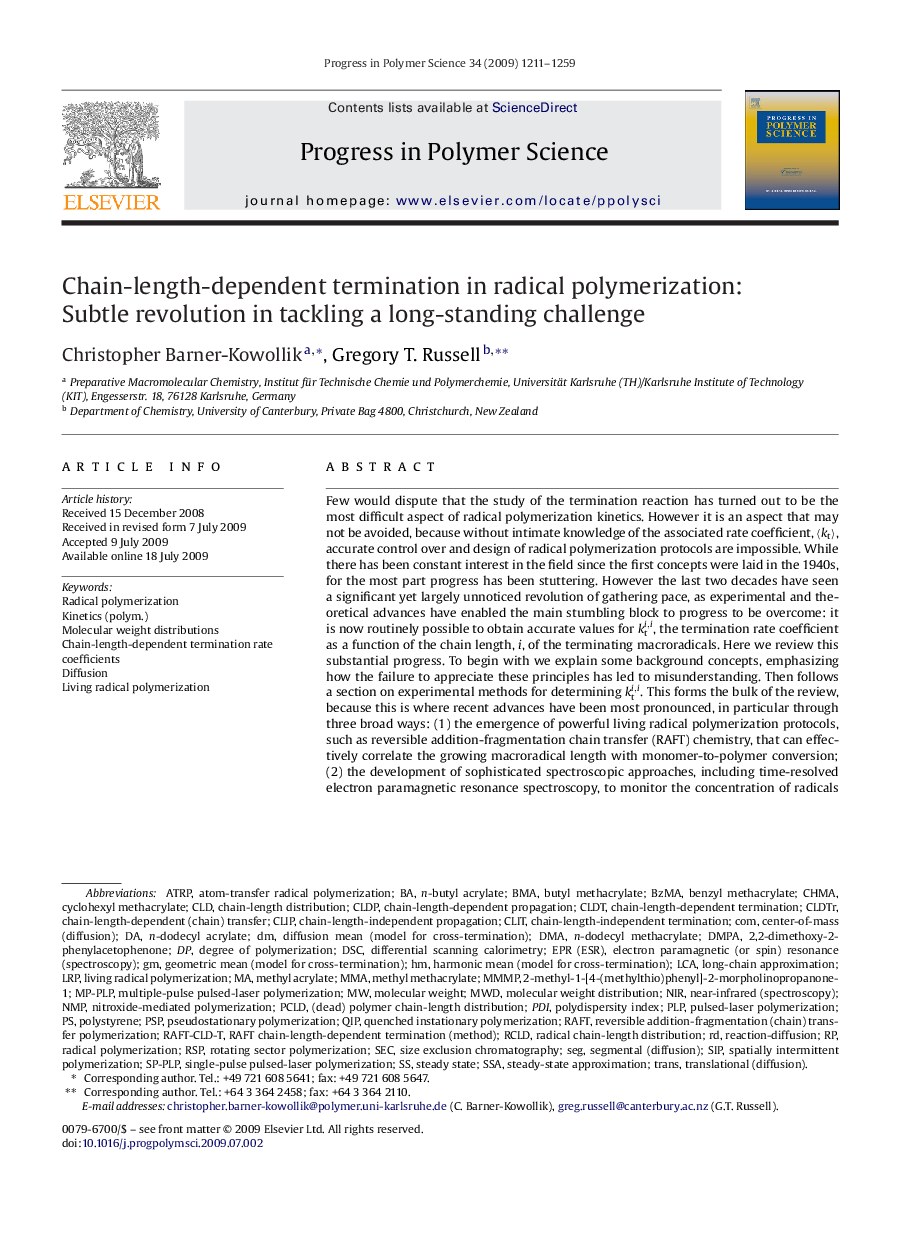| Article ID | Journal | Published Year | Pages | File Type |
|---|---|---|---|---|
| 5208661 | Progress in Polymer Science | 2009 | 49 Pages |
Few would dispute that the study of the termination reaction has turned out to be the most difficult aspect of radical polymerization kinetics. However it is an aspect that may not be avoided, because without intimate knowledge of the associated rate coefficient, ãktã, accurate control over and design of radical polymerization protocols are impossible. While there has been constant interest in the field since the first concepts were laid in the 1940s, for the most part progress has been stuttering. However the last two decades have seen a significant yet largely unnoticed revolution of gathering pace, as experimental and theoretical advances have enabled the main stumbling block to progress to be overcome: it is now routinely possible to obtain accurate values for kti,i, the termination rate coefficient as a function of the chain length, i, of the terminating macroradicals. Here we review this substantial progress. To begin with we explain some background concepts, emphasizing how the failure to appreciate these principles has led to misunderstanding. Then follows a section on experimental methods for determining kti,i. This forms the bulk of the review, because this is where recent advances have been most pronounced, in particular through three broad ways: (1) the emergence of powerful living radical polymerization protocols, such as reversible addition-fragmentation chain transfer (RAFT) chemistry, that can effectively correlate the growing macroradical length with monomer-to-polymer conversion; (2) the development of sophisticated spectroscopic approaches, including time-resolved electron paramagnetic resonance spectroscopy, to monitor the concentration of radicals after the application of a laser pulse; and (3) the attaining of a keener understanding of the kinetics of conventional steady-state polymerization. We then illustrate the remarkable progress that has been made by documenting how independent methods have arrived at almost identical kti,i values for a variety of monomers, including methyl methacrylate, styrene and butyl acrylate. As well as these case studies, we collate and critically evaluate all existing kti,i data at low conversion. In the final section of the review, we embed these results in currently available theoretical contexts. While this is certainly an area for future work of a deeper nature, it would seem that most current results can be understood at least qualitatively within a surprisingly simple theoretical framework.
